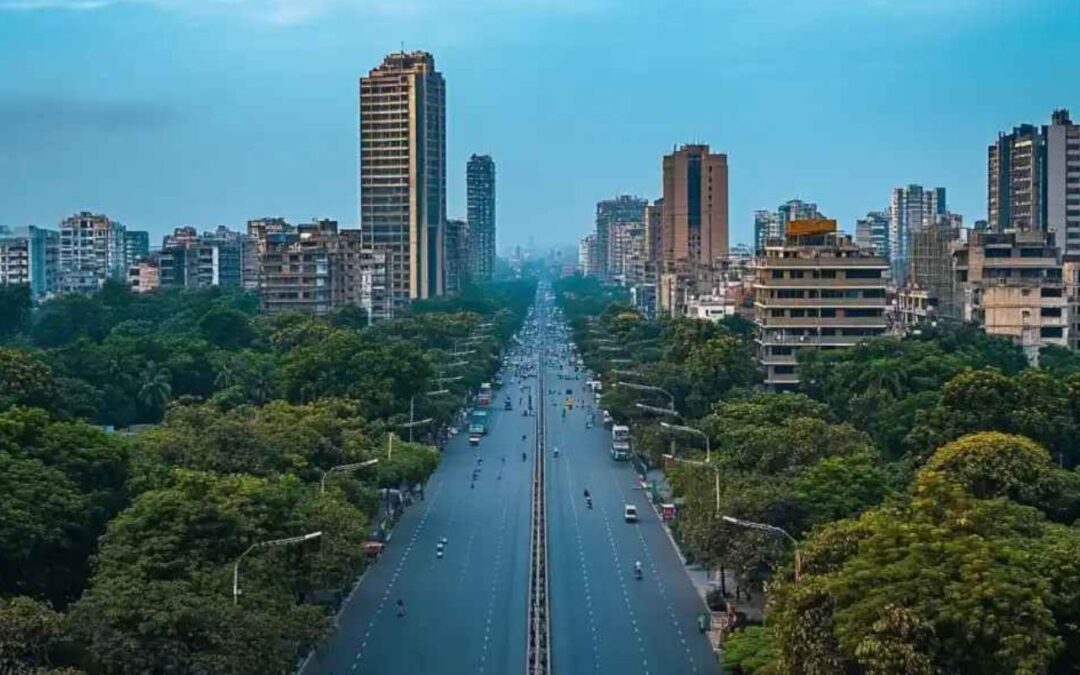Synopsis- Maintaining Urban cleanliness is quite a challenge and a success in a country as big and diversified like India. The cities by the Swachh Survekshan 2025 rankings have again highlighted urban centers that marked the importance of city civic responsibility, progressive governance and urban planning. This article explores the major cities in the forefront of the cleanliness revolution, their population size, the government organizations and the policies that made them excel in the year 2025.
Methodology and Selection Logic
The list is based on Swachh Survekshan, 2024-25 results released by the Ministry of Housing & Urban Affairs, also the elitist Super Swachh League and the highest performers in each population category. The ranking of the cities is based on a composite score out of 12,500,3R compliance, Garbage-Free City (GFC) stars, ODF++/Water+ status, and their consistency since 2021.
| Rank | City | State | 2025 Pop. (est.) | GFC Stars | Ruling Party (State) | Municipal Control |
| 1 | Indore | Madhya Pradesh | 3,483,000 | 7-Star | BJP | BJP-led IMC |
| 2 | Surat | Gujarat | 8,582,000 | 7-Star | BJP | BJP-run SMC |
| 3 | Navi Mumbai | Maharashtra | 1,636,000 | 7-Star | Mahayuti (BJP–SS) | Administrator (NMMC) |
| 4 | Ahmedabad | Gujarat | 9,062,000 | 5-Star | BJP | BJP-led AMC |
| 5 | Bhopal | Madhya Pradesh | 2,686,000 | 5-Star | BJP | BJP-run BMC |
| 6 | Lucknow | Uttar Pradesh | 4,133,000 | 7-Star | BJP | BJP-run LMC |
| 7 | Noida | Uttar Pradesh | 850,000 est. | 5-Star | BJP | Noida Authority (Govt) |
| 8 | Chandigarh | Chandigarh (UT) | 1,266,000 | 3-Star | UT Admin (BJP-led) | MCC (BJP-Mayor) |
| 9 | Mysuru | Karnataka | 1,346,000 | 5-Star | INC | BJP-Mayor |
| 10 | Vijayawada | Andhra Pradesh | 2,350,700 | 7-Star | YSRCP | Vijayawada M.C. (YSRCP) |
1. Indore, MP
- Estimated Population 2025: 3,483,000
- Governing Body: Surat Municipal Corporation
- Policies Implemented
- 100% door to door pick up through RFID-tagged vehicles and use of GPS to track its route.
- Bio-CNG and compost plants (650-TPD), 400 city buses powered by gobar-dhan slurry.
- Mainstreaming 3R behaviour through zero-waste polling stations“Adarsh Matadan Kendra”.
2. Surat, Gujrat
- Population (2025 est.): 8,582,000
- Municipal Body: Surat Municipal Corporation
- What Worked
- 1,500 TPD combined plant making 100 TPD CNG and masonry blocks, achieving zero land fill.
- Pavers made of Construction & Demolition (C&D) waste accelerated real estate.
3. Navi Mumbai, Maharashtra
- Population (2025 est.): 1,636,000
- Governing Body: Administrator-led Navi Mumbai Municipal Corporation
- What Worked:
- The city used a circular waste economy and opened seven Recycle Marts and co-located repair cafes. A powerful mass movement by the transgender led to reduction in littering. The NMMC expedited its infrastructure through capex injection, obtained a 7-Star GFC certificate and green financing of 300 crores.
4. Ahmedabad, Gujarat
- Population (2025 est.): 9.06 millions
- Governing body: Ahmedabad municipal corporation
- What Worked:
- The 2023 Zero-Waste Roadmap prohibited open dumps, and mandated “pay as you throw” bylaws. To reclaim Pirana landfill, Ahmedabad was using legacy biomining equipment to release 150 acres for green energy projects and urban investment.
5. Bhopal, MP
- Population (2025 est.): 2.69 mill.
- Governing Body: Bhopal Municipal Corporation
- What Worked:
- The 850 tonne per day waste in Bhopal is completely converted using a series of MRFs and an expanding CNG fleet. The dumpsite transformed into an eco park resulting in an appreciating area in terms of real estate and pride among civic citizens.
Also read: Top 7 Most Populated Cities in India 2025 – Find Out Who Tops the List
6. Lucknow, UP
- Population (2025 est.): 4.13 million
- Governing body: Lucknow Municipal corporation
- What Worked:
- The city has cleared more than 3.2 million m³ of dumps with 97 percent automated segregation. A planting of one million saplings throughout the areas of the ring-road contributed to its 7- Star GFC rating and clean air.
7. Noida, Uttar Pradesh
- Estimated Population 2025: 0.85M
- Governing Body: Noida Authority
- What Worked:
- The data-first strategy allowed Noida to be capable of automating the waste supply chains through the idea of IoT bins and street cleaning performed through AI. This triple Water+ certification, together with the reuse of STP water placed the city as clean tech.
8. Chandigarh (UT)
- Population(2025 est.): 1.26 million
- Administration: Chandigarh Municipal Corporation
- What Worked:
- Even with a low segregation score, the inflow of land fill in Chandigarh was minimized due to high RWA involvement and composting incentives. The management used the heavy use of challan to increase compliance.
9. Mysuru, Karnataka
- Population (2025 est.): 1.34 million
- Administration: Mysuru City Corporation
- What Worked:
- Mysuru was the first in regard to “two bin one bag” waste segregation. More than 45 decentralised biomethanation plants are currently serving to power the public lights.
10. Vijayawada, AP
- Population Estimates 2025: 2.35 million.
- Governance Body: Vijayawada Municipal Corporation
- What Worked:
- 7-Star status of the city occasioned by universal composting engagements, segregation campaigns in schools and real-time observing of garbage courtesy via command centres. Cleanliness was associated with development which made it more attractive.
Important Role of Civic Sense and People
These cities show how important civic pride and proactive citizen engagement are as key ingredients alongside a good policy with constant communication and engagement. Thanks to local groups, online engagements and the learnings of cleanliness lessons from school has made cleanliness a habit.
Conclusion
The best clean cities of India in 2025 are raising the bar for urban sanitation level. They have proven that with a mix of aggressive governance, innovative planning, deployment of technology and community engagement, cleanliness can be maintained and that they can lead to improved standards of urban lifestyle. This model can serve as a guideline to the rest of the other cities in India that would like to have cleaner and healthier futures.
Written by Prajwal Hegde





